Levitra is a PDE5 inhibitor used to treat erectile dysfunction. It’s not as well known as its famous cousins, Viagra and Cialis but it does have several advantages that should make you consider it if you have erectile dysfunction. In this blog, we will address the question, “What Levitra is used for?” to allow you to make an informed decision regarding any erectile dysfunction treatments you take.
As with all our blogs, we don’t just answer the question posed in the title. We will run you through the basics before delving into the question more deeply.
If you are familiar with the topics, you can use the navigational table below to skip to the topics that interest you.
Table of contents
- What is erectile dysfunction?
- How do men get an erection?
- What causes erectile dysfunction?
- What is Levitra used for?
- What is the active ingredient in Levitra?
- How does Levitra work?
- How soon does Levitra start to work?
- How long does Levitra last?
- When is the best time to take Levitra?
- Does food and alcohol effect absorption of Levitra?
- What are the side effects with Levitra?
- How does Levitra compare to Viagra and Cialis?
- Key takeaways about Levitra
- Seeking professional help for erectile dysfunction
- Low testosterone and erectile dysfunction
- Free TRT Consultation
- Why choose for Medical Mojo for your sexual health?
-
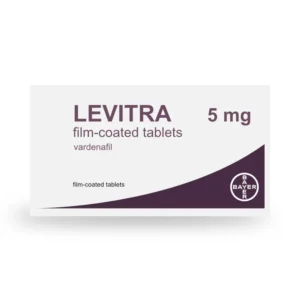 Levitra 5mg tabletsPrice range: £15.99 through £59.99
Levitra 5mg tabletsPrice range: £15.99 through £59.99 -
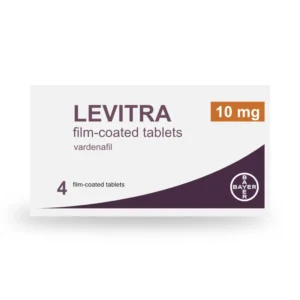 Levitra 10mg tabletsPrice range: £39.99 through £149.99
Levitra 10mg tabletsPrice range: £39.99 through £149.99 -
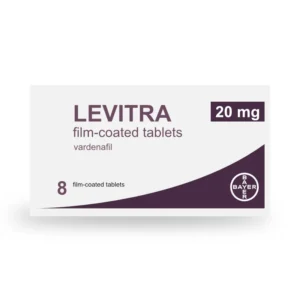 Levitra 20mg tabletsPrice range: £65.99 through £262.99
Levitra 20mg tabletsPrice range: £65.99 through £262.99
What is erectile dysfunction?
A good place to start is with a definition of erectile dysfunction.
Erectile dysfunction is defined as failure to achieve a rigid enough erection for penetrative sexual intercourse(Muneer et al., 2014).
Before we start to explore the causes of erectile dysfunction, let’s take a quick detour to find out how we get an erection.
How do men get an erection?
Getting an erection is all about increasing the blood flow to the penis. There are different chemicals the body uses to achieve this but when talking about Levitra or vardenafil or any other PDE5 inhibitor (don’t worry we will explain this term) such as Viagra and Cialis, we are only concerned with nitric oxide and cGMP.
Sexual stimulation causes the release of nitric oxide (NO), which then diffuses into the muscle that surrounds the blood vessels, where it increases the levels of another chemical called cGMP (Panchatsharam et al., 2023). The increased level of cGMP then decrease levels of calcium.
Why do lower levels of calcium cause blood to rush into the penis? Well, muscles need calcium to contract, and when the smooth muscles surrounding the blood vessels contract, less blood flows to the penis. So, less calcium equals muscle relaxation which then leads to vasodilation or widening of the blood vessels, leading to that wonderful erection.
What causes erectile dysfunction?
Since an erection is dependent on a good blood supply, any diseases that interfere with this can lead to erectile dysfunction. The following long term conditions have been linked to erectile dysfunction (Orimoloye et al., 2019).
- Heart disease
- High cholesterol, and
- High blood pressure
Diabetes is another long term condition that is a major cause of erectile dysfunction (Maiorino et al., 2014). The prevalence of erectile dysfunction is approximately 3.5?fold higher in men with diabetes (Defeudis et al., 2022).
What is Levitra used for?
I think we have answered this one already, but if you haven’t read anything above and skipped to this section, then we will answer this question now.
Levitra is used to treat erectile dysfunction (ED) in adult men. Erectile dysfunction is the inability to achieve or maintain an erection that’s firm enough for sexual activity.
When taken before sexual activity, Levitra helps enhance the natural erectile response in men who are sexually stimulated, making it easier to achieve and maintain an erection.
What is the active ingredient in Levitra?
The active ingredient in Levitra is vardenafil. Vardenafil belongs to a class of medications known as PDE5 inhibitors, which work by increasing blood flow to the penis during sexual arousal, helping men achieve and maintain an erection.
How does Levitra work?
Remember how we said that an erection is caused by increased cGMP levels? Well, most men do not walk around all day with an erection and the way the body makes the penis flaccid again is to decrease the levels of cGMP. The way the body does this is by using an enzyme system called phosphodiesterase or PDE.
There are a whole family of PDE enzymes ranging from PDE1 to PDE11, which are coded by 21 different genes (Lin et al 2003).
In the penis, PDE enzymes are responsible for breaking down cGMP, which increases its levels resulting in relaxation of the vascular smooth muscle and widening of the blood vessels.
Nearly all PDE types can be found in the penile tissue except for PDE6. However, the most common PDE type in the penis is PDE5 (Carson et al., 2007).
So, Levitra blocks the effects of the PDE5 and thus increases cGMP levels (Manecke et al., 1999), leading to widening of penile blood vessels which then causes an erection. Remember more blood equals an erection.
How soon does Levitra start to work?
In a study comparing sildenafil, tadalafil and vardenafil, it was found that vardenafil was the fastest to achieve an erection, taking 40 minutes, while sildenafil took 60 minutes and tadalafil took 2 hours (Porst et al., 2004).
How long does Levitra last?
Levitra is rapidly absorbed after administration and an erection can be achieved within the first 25 to 60 minutes. The effects of vardenafil last for about 4 hours (Klotz et al., 2001).
When is the best time to take Levitra?
It is best to take the Levitra approximately 1 hour prior to planned intercourse (Crowe et al., 2004).
Does food and alcohol effect absorption of Levitra?
No, neither food nor alcohol has been shown to cause any significant changes in vardenafil absorption (Rajagopalan et al., 2003). This is unlike its PDE inhibitor cousin Viagra, whose absorption is decreased if taken with a fatty meal.
A high-fat meal can delay absorption of sildenafil, the active ingredient in Viagra, by over an hour, with an average reduction in peak concentrations of 29% (Nichols et al., 2002).
Even though alcohol does not affect the absorption of vardenafil, it is still not advised to overindulge if you are looking for long term solutions for your erectile dysfunction. To learn more, read our blog “Can I take alcohol while taking sildenafil?”.
What are the side effects with Levitra?
Levitra has similar side effects as it’s PDE inhibitor cousins such as Viagra and Cialis.
In a large clinical trial on the safety analysis of vardenafil, which included 762 subjects the most common adverse effects were headache (10–21%), rhinitis (9–17%), flushing (5–13%), and dyspepsia (1–6%) (Hellstrom et al., 2002).
How does Levitra compare to Viagra and Cialis?
Levitra, Viagra, and Cialis are all used to treat erectile dysfunction, but they differ in their active ingredients, how quickly they start working, and how long their effects last (Porst et al., 2004).:
- Levitra: Contains vardenafil, works within 25-60 minutes, with effects lasting up to four hours.
- Viagra: Contains sildenafil, typically works within 30-60 minutes, lasting around four hours.
- Cialis: Contains tadalafil, begins working in 30-60 minutes, with effects lasting up to 36 hours.
-
 Levitra 10mg tabletsPrice range: £39.99 through £149.99
Levitra 10mg tabletsPrice range: £39.99 through £149.99 -
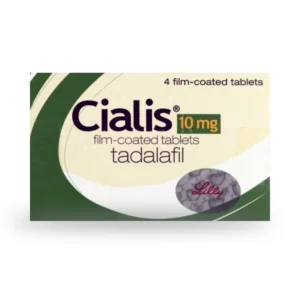 Cialis 10mg tablets£19.99
Cialis 10mg tablets£19.99 -
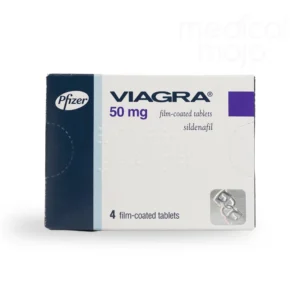 Viagra 50mg tabletsPrice range: £29.99 through £114.95
Viagra 50mg tabletsPrice range: £29.99 through £114.95
Each option has unique benefits, so the best choice depends on your lifestyle and needs. Consult your doctor for personalised guidance.
Key takeaways about Levitra
Here are five key points about Levitra and its uses:
- Active Ingredient: Levitra contains vardenafil, a PDE5 inhibitor that increases blood flow to the penis during sexual stimulation, supporting erections.
- Primary Use: Levitra treats erectile dysfunction (ED) in adult men who have difficulty achieving or maintaining an erection suitable for sexual activity.
- How It’s Taken: Vardenafil is usually taken 25-60 minutes before sexual activity, with effects lasting around four to five hours.
- Differences from Other ED Medications: Levitra differs from Viagra and Cialis in its active ingredient, time to take effect, and how long its effects last.
- Consult Your Doctor First: Consulting with a doctor before taking Levitra ensures it is safe, especially if you have existing health conditions or take other medications.
Seeking professional help for erectile dysfunction
Erectile dysfunction shouldn’t be a subject shrouded in embarrassment—it often serves as a preliminary alert to possible vascular or psychological issues.
You can view chronic erectile dysfunction as a sort of early warning signal, much like a canary in a coal mine, indicating the health of your blood vessels.
Researchers suggest that there is typically a three-year period from when erectile dysfunction begins to when more severe cardiovascular issues might develop (Montorsi et al., 2003).
At Medical Mojo, we’re equipped and ready to support you. Whether you need alternatives to PDE5 inhibitors or a customised treatment plan, we’re here to help. Taking the first step by contacting us with your questions is crucial.
Low testosterone and erectile dysfunction
Low testosterone and erectile dysfunction are closely linked. You might already be aware of how low testosterone can affect a man’s health. Previously, symptoms of low testosterone, or hypogonadism, were often attributed to aging, but now it’s clear they’re related to testosterone levels.
One of the earliest indicators of low testosterone might be erectile dysfunction, particularly the loss of morning erections (Schardein et al., 2022).
If you find yourself experiencing erectile dysfunction more frequently, it could be wise to have your testosterone levels checked.
Free TRT Consultation
Interested in learning more about testosterone replacement therapy (TRT)? At Medical Mojo we have experts in men’s health and TRT, if you would like a FREE TRT consultation, please contact us.
Why choose for Medical Mojo for your sexual health?
- Private and non-judgmental consultations from the comfort of your home
- Personalised treatment plans tailored to your comprehensive health profile
- Health screenings to check if sildenafil or other treatments are right for you
- Ongoing support and follow-ups throughout your treatment
- Clear explanations about what to expect from your treatment
- In-depth lifestyle advice to boost your sexual health
- A dedication to evidence-based treatments to ensure the best care
Note: This information is for educational purposes only and should not substitute for professional medical advice.
References:
- Muneer A, Kalsi J, Nazareth I, Arya M. Erectile dysfunction. BMJ. 2014 Jan 27;348: g129.
- Panchatsharam PK, Durland J, Zito PM. Physiology, Erection. In: StatPearls. StatPearls Publishing, Treasure Island (FL); 2023. PMID: 30020650.
- Orimoloye OA, Feldman DI, Blaha MJ. Erectile dysfunction links to cardiovascular disease-defining the clinical value. Trends Cardiovasc Med. 2019 Nov;29(8):458-465.
- Maiorino MI, Bellastella G, Esposito K. Diabetes and sexual dysfunction: current perspectives. Diabetes Metab Syndr Obes. 2014 Mar 6; 7:95-105. doi: 10.2147/DMSO.S36455. PMID: 24623985; PMCID: PMC3949699.
- Defeudis G, Mazzilli R, Tenuta M, Rossini G, Zamponi V, Olana S, Faggiano A, Pozzilli P, Isidori AM, Gianfrilli D. Erectile dysfunction and diabetes: A melting pot of circumstances and treatments. Diabetes Metab Res Rev. 2022 Feb;38(2):e3494. doi: 10.1002/dmrr.3494. Epub 2021 Sep 21. PMID: 34514697; PMCID: PMC9286480.
- Lin CS, Xin ZC, Lin G, et al. Phosphodiesterases as therapeutic targets. Urology. 2003; 61:685–91. doi: 10.1016/s0090-4295(02)02439-1.
- Carson CC. Phosphodiesterase type 5 inhibitors: state of the therapeutic class. Urol Clin North Am. 2007; 34:507–15. doi: 10.1016/j.ucl.2007.08.013.
- Manecke RG, Mulhall JP. Medical treatment of erectile dysfunction. Ann Med 1999;31:388–98.
- Klotz T, Sachse R, Heidrich A, Jockenhovel F, Rohde G, Wensing G, et al. Vardenafil increases penile rigidity and tumescence in erectile dysfunction patients: A RigiScan and pharmacokinetic study. World J Urol 2001;19:32–9.
- Crowe SM, Streetman DS. Vardenafil Treatment for Erectile Dysfunction. Annals of Pharmacotherapy. 2004;38(1):77-85. doi:10.1345/aph.1D019
- Rajagopalan P, Mazzu A, Xia CH, Dawkins R, Sundaresan P. Effect of high-fat breakfast and moderate-fat evening meal on the pharmacokinetics of vardenafil, and oral phosphodiesterase-5 inhibitor for the treatment of erectile dysfunction. J Clin Pharmacol 2003;43:260–7.
- Hellstrom WJG, Gittelman M, Karlin G, Segerson T, Thibonnier M, Taylor T, et al. Vardenafil for treatment of men with erectile dysfunction: Efficacy and safety in a randomized, double-blind, placebo-controlled trial. J Androl 2002;23:763–71.


